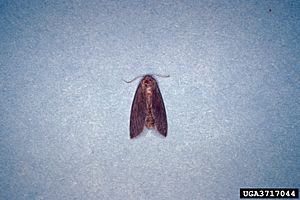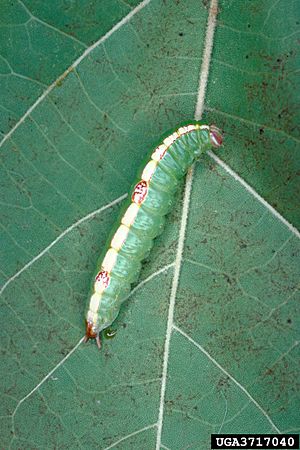Misogada facts for kids
Quick facts for kids Misogada |
|
|---|---|
 |
|
 |
|
| Scientific classification | |
| Genus: |
Misogada
|
| Species: |
unicolor
|
| Synonyms | |
|
|
The drab prominent moth, also known as Misogada unicolor, is a type of moth found in North America. It belongs to a special group of moths called Misogada, which only has this one species. This moth was first officially described in 1864 by a scientist named Alpheus Spring Packard.
Contents
What Does the Drab Prominent Moth Look Like?
The drab prominent moth has a wingspan of about 45 millimeters (which is about 1.7 inches). This means its wings stretch about that far from tip to tip. The name "drab prominent" suggests it has a rather plain or dull color, often brownish or grayish.
Where Does the Drab Prominent Moth Live?
You can find the drab prominent moth across a large part of North America. It lives from Nova Scotia in Canada all the way down to Florida in the United States. Its home also stretches west to Texas and north into Saskatchewan, Canada.
Life Cycle and Habits
The drab prominent moth goes through its full life cycle two to three times each year. This means there are two or three new groups, or "generations," of moths born in a single year.
Larvae (Caterpillars)
The young moths, called larvae or caterpillars, eat leaves from certain trees. They especially like Poplar trees and Platanus trees, which are also known as Sycamore trees.
When they are very young, these caterpillars like to feed together in groups. They eat only the soft parts of the underside of the leaves, leaving behind the veins. This makes the leaves look like skeletons.
As the caterpillars grow older, they become more independent. They start to feed alone and eat almost the entire leaf, leaving only the main veins.
The caterpillars are light green in color. They have a wide, yellowish-white stripe down their back. On each side, they have brownish patches and faint, thin lines. When they are fully grown, these caterpillars can be 30 to 42 millimeters long (about 1.2 to 1.6 inches). You can usually find these caterpillars from April through September.

